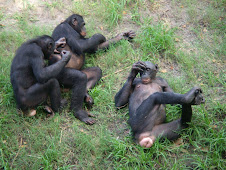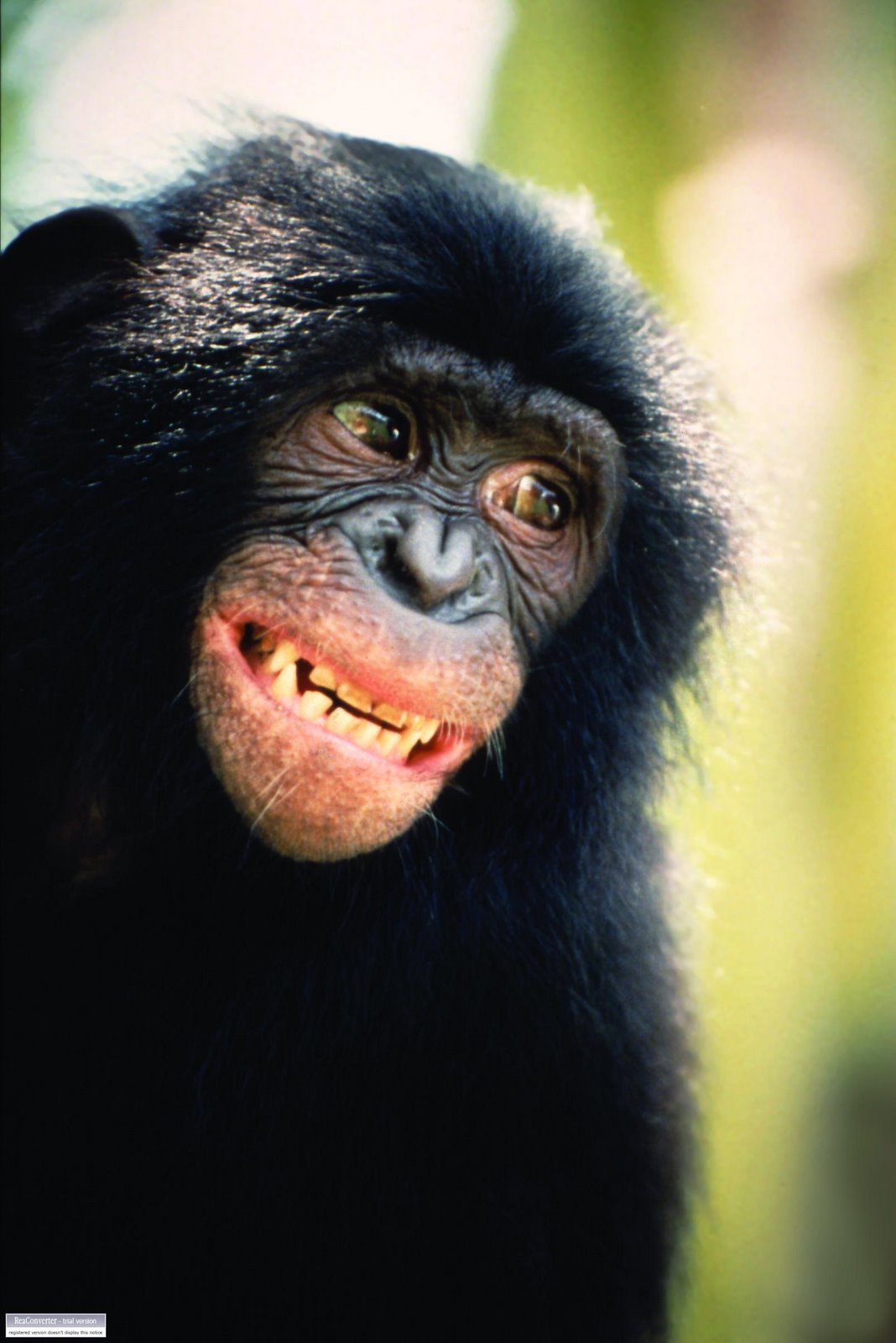
This was the first page of a draft cartoon that was called "The Fascinating Animals of Zaire" (now the Democratic Republic of the Congo). Kizito and I collaborated on the story and artwork in 1992.
In the tale, the main character, named Biselenge (a self-portrait of the artist), says, "In Kinshasa where I grew up, I was a kid without ambition. I went to school, I liked playing with my friends, and...in short, for me, that was all there was to life."
In the cartoon, Kizito's dad, seeing the boy coming home from a game of ball, exclaims, "Biselenge! Come here! You've been playing with your worthless friends again? He grabs Biselenge by the ear and says, "Playing, always playing, never time for homework! Well then, I think I'll send you to your uncle in Kisangani. He at least, will keep you under his eye."
Biselenge says, "It was at Kisangani where I got the taste of nature. I devoted my studies to zoology. Animals became my passion." He continues against views of a chimp and a herd of zebra, "I could observe animals for hours, whether they were in a zoo, or in complete liberty in the wild."
In the final panel, Biselenge is talking against the main street in downtown Kinshasa. One can almost smell the smells and feel the frenzy of the hustle. A thief with a stolen wallet is darting from behind a truck and a cop has stopped a dented yellow cab, while a scantily clad woman turns her head at honking.
Biselenge says, "I returned to Kinshasa, but everything has changed! Too much life for me: the crowds, the noise, the dust, the vehicle fumes....I suffocate. I miss the open spaces."
This booklet was designed to appeal to urban youth living in Kinshasa, the capital. We wanted the reader identify with a local kid who comes home, and then goes on to talk about unique and interesting local wildlife.

 Giant otters are diurnal, which means that they are active throughout the day -- except for brief periods of napping -- which provides quite a show for the visiting public at the Jacksonville Zoo and Gardens. They cavort in their pool and dry their fur in the sand on the banks. These two brothers were born at the Philadelphia zoo, and are on loan to the Jacksonville Zoo and Gardens.
Giant otters are diurnal, which means that they are active throughout the day -- except for brief periods of napping -- which provides quite a show for the visiting public at the Jacksonville Zoo and Gardens. They cavort in their pool and dry their fur in the sand on the banks. These two brothers were born at the Philadelphia zoo, and are on loan to the Jacksonville Zoo and Gardens.































